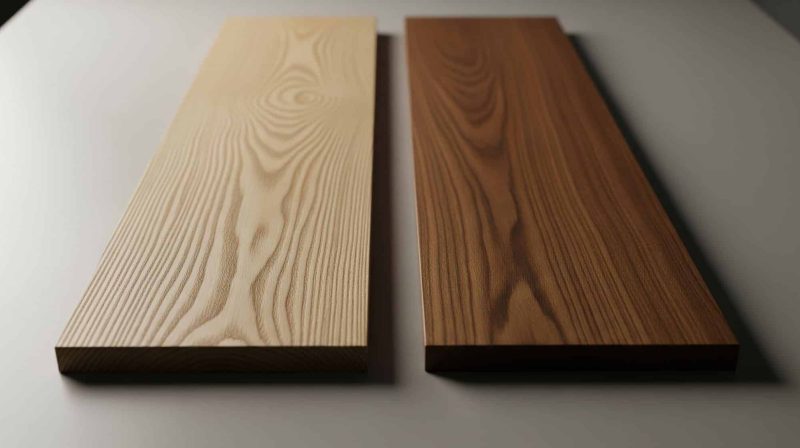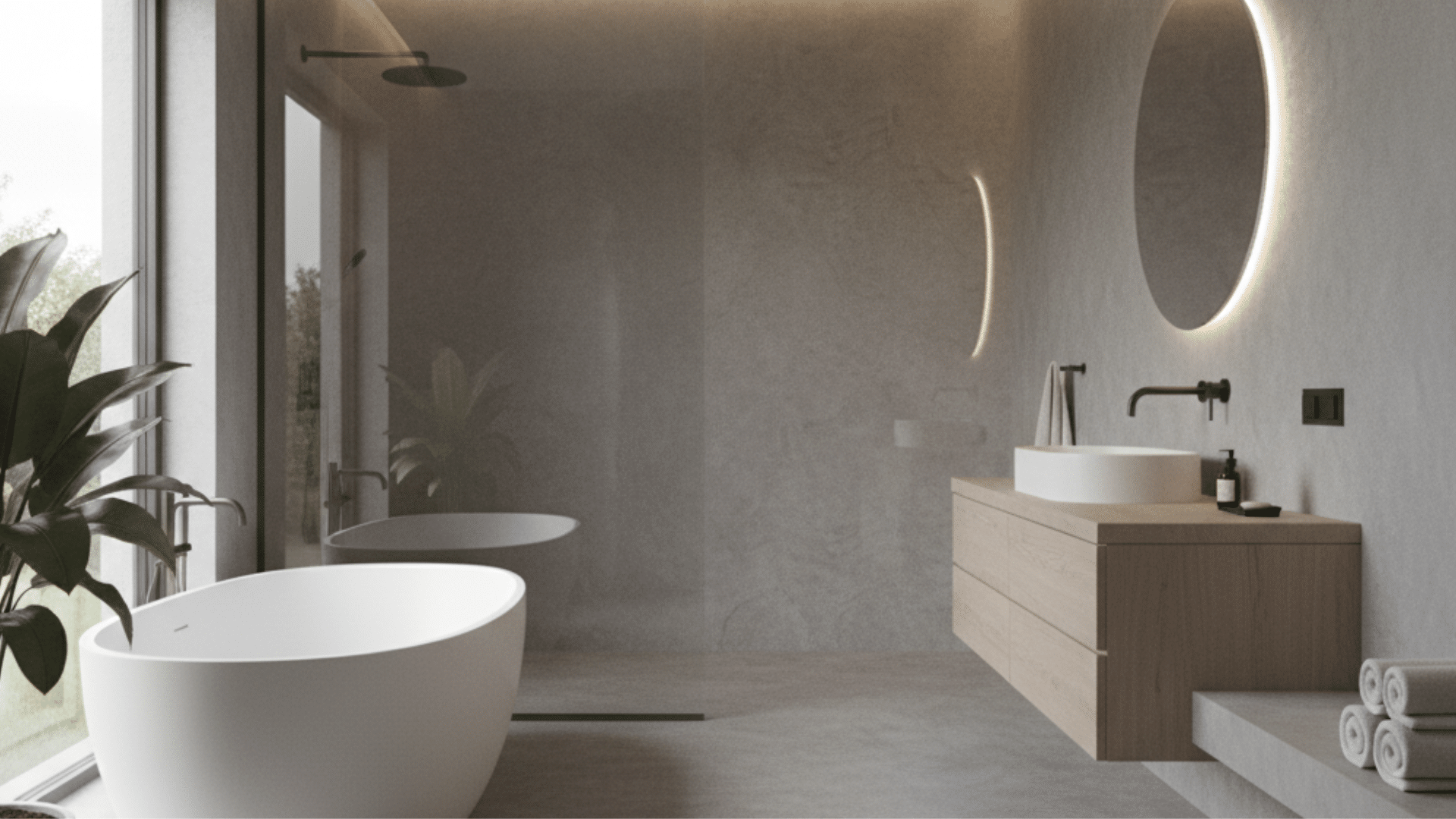Let’s be honest, choosing between oak and walnut can be tough. Both are beautiful hardwoods, but when you’re investing in furniture or flooring, strength matters just as much as style.
We get it. You want wood that can withstand daily life, including kids, pets, spills, and the test of time, without losing its charm.
That’s why this guide cuts through the noise and compares oak vs walnut with a sharp focus on durability. From hardness ratings and scratch resistance to long-term wear and maintenance, we’ll show you how each wood holds up in the real world.
If you’re eyeing new floors or a dining table that’ll last for years, we’ll help you choose the right wood for your space and your lifestyle.
Visual Differences in Oak and Walnut Grain, Color, and Style
Oak is known for its light to medium brown tones, with a coarse, open grain pattern that can vary depending on the species. White oak leans toward a golden beige, while red oak offers a warmer, pinkish tone.
Walnut, in contrast, features rich chocolate-brown hues with a smoother, more elegant grain. Its natural swirling and wavy patterns make it a favorite for artistic pieces and statement furniture.
While durability matters, many buyers initially choose based on how these woods look in a room. Oak offers a traditional, rustic appeal, while walnut feels refined and luxurious.
Which is Stronger? Oak vs Walnut for Long-Term Durability
Durability starts with hardness. According to the Janka hardness scale:
- White oak rates around 1360 lbf
- Red oak around 1290 lbf
- Walnut (typically black walnut) is softer, at about 1010 lbf
That means oak is more resistant to dents, scratches, and general wear. White oak also has better moisture resistance and is even used in barrel-making and exterior applications.
Walnut is still a hardwood and holds up well for most furniture, but it will show wear faster in high-traffic or high-use areas.
Oak vs Walnut in Furniture and Flooring Uses
Both oak and walnut are popular hardwoods, but they serve different purposes when it comes to furniture, flooring, and cabinetry.
Here’s how each wood performs in real-world home applications.
1. Choosing Between Style and Strength for Furniture
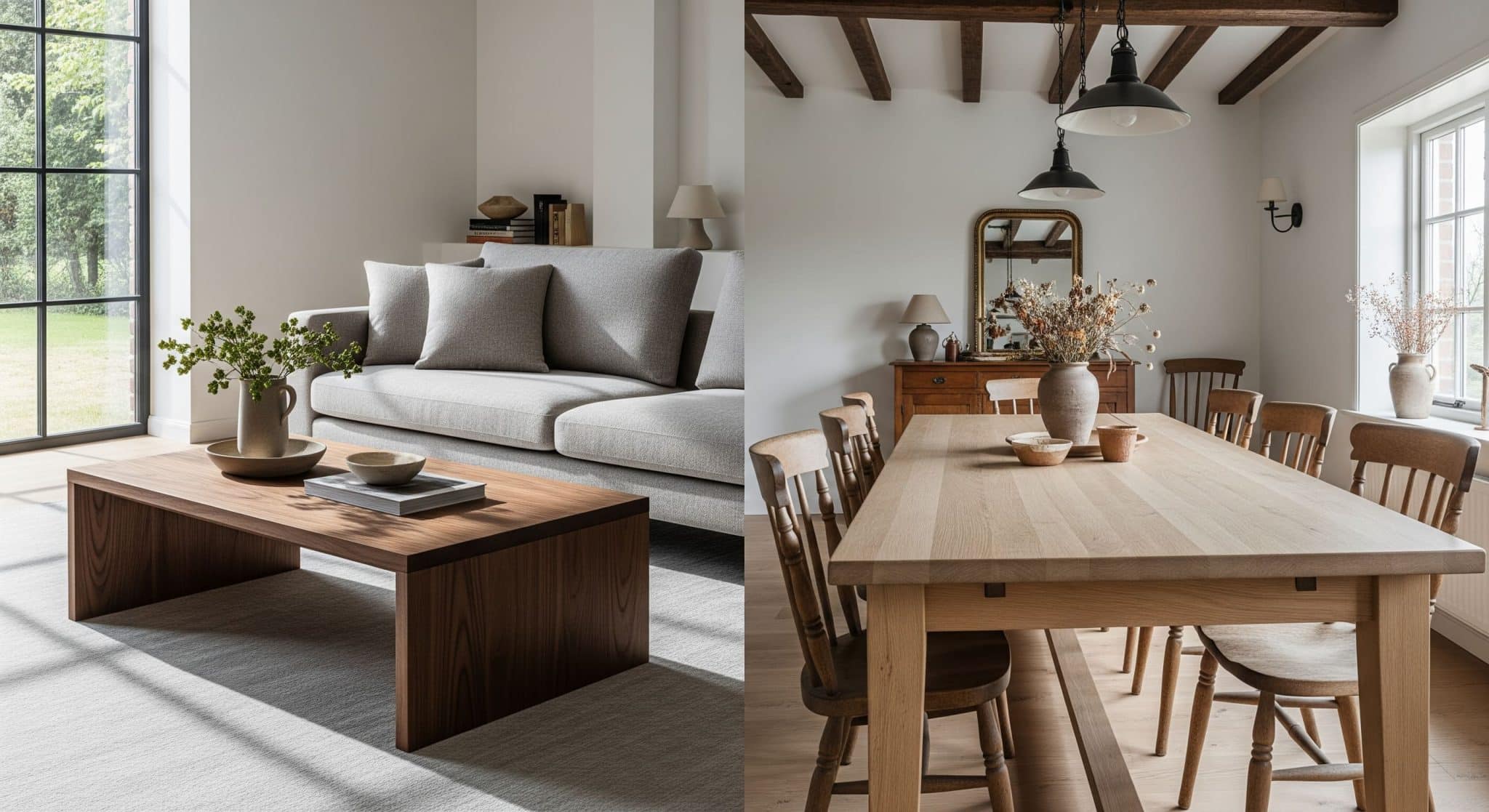
Walnut is a top choice for fine furniture thanks to its rich color and smooth grain. It’s often used in custom desks, coffee tables, and decorative pieces where appearance matters.
Easy to shape and carve, walnut is popular for luxury designs and heirloom-quality builds.
Oak is known for its strength and is commonly used in dining tables, desks, and chairs that see daily use. Its bold grain and durability make it ideal for long-lasting furniture.
Oak also takes stain well, offering flexibility in style, from rustic to modern, while standing up to everyday wear.
2. Choosing Flooring for Strength or Style
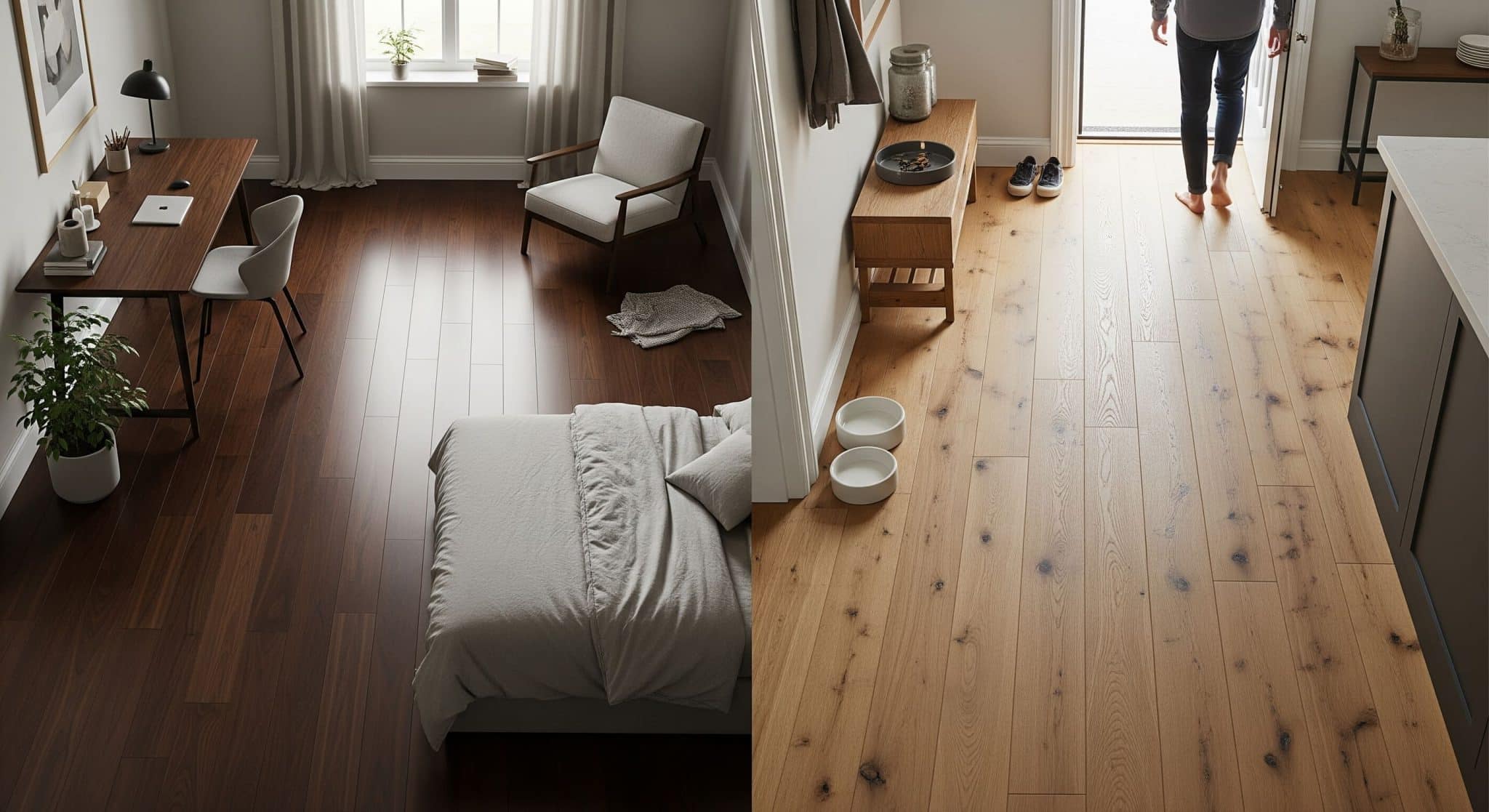
Oak is popular in high-traffic areas like kitchens and hallways because of its durability.
It’s harder than walnut, resists dents and wear, and can be refinished several times. Its grain hides scratches well, making it practical for busy homes.
Walnut, though softer, adds rich color and a luxurious feel to floors. Ideal for bedrooms, offices, or formal spaces with light foot traffic, its deep tones and smooth texture create a warm, elegant look suited for aesthetic spaces over high-traffic areas.
3. Cabinetry and Trim for Daily Use or High-End Style
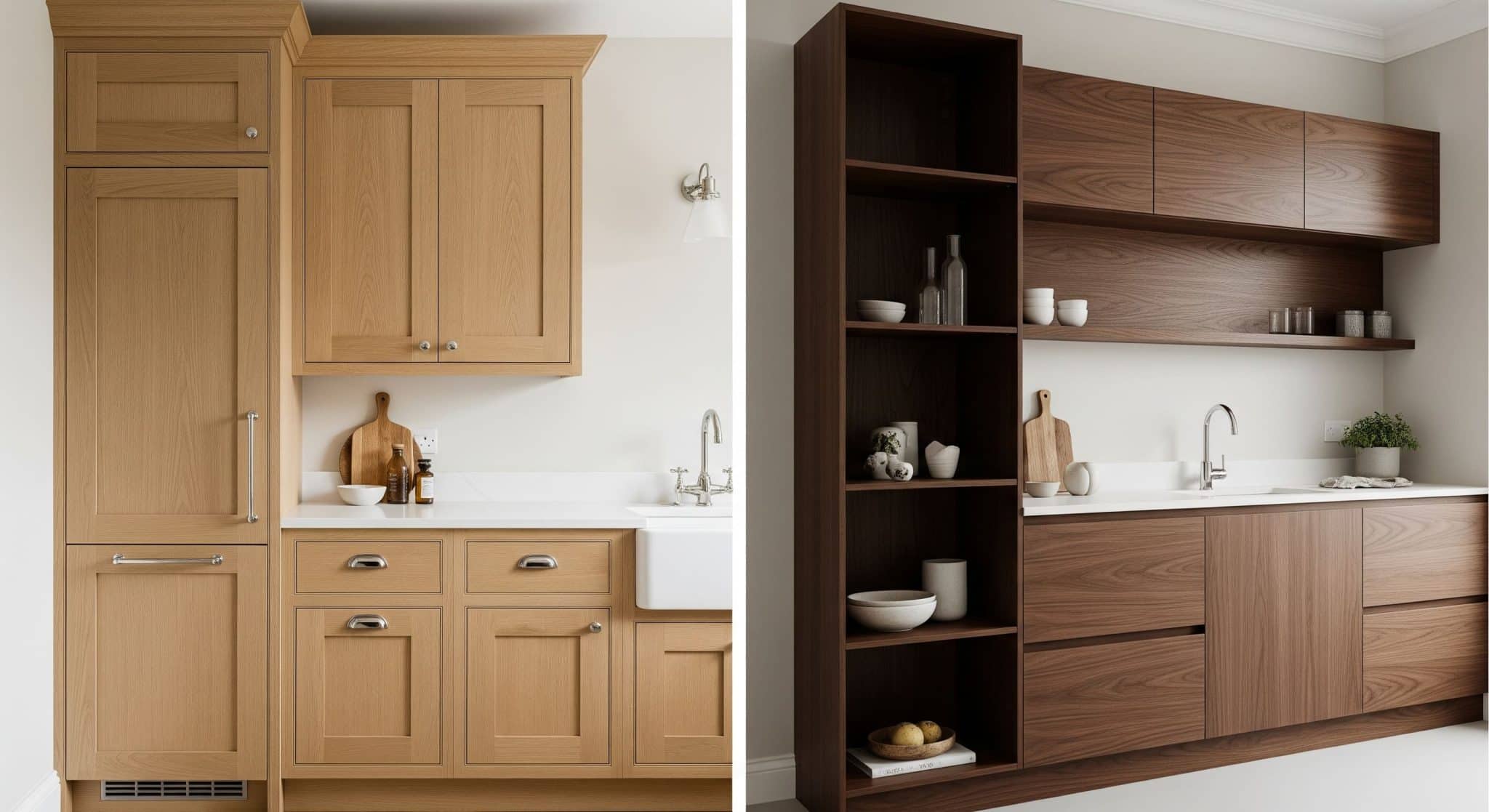
Oak is a versatile, durable choice for kitchen cabinets, trim, and built-ins.
It works with stains and paint, fitting traditional to modern styles. Its strong grain adds character, and its durability suits high-use areas like kitchens.
Walnut is a specialty choice often used in luxury cabinetry to showcase its dark, rich grain. It’s popular for open shelving, accent panels, or statement pieces that highlight its natural beauty.
Though more costly, it adds warmth and an upscale look to any space.
Oak vs. Walnut in Long-Term Maintenance and Wear
Keeping your wood looking great isn’t just about strength; it’s also about care. Here’s how oak and walnut compare when it comes to long-term upkeep:
- Oak is more resistant to dents and warping, making it a smart choice for long-term durability.
- It handles refinishing well, ideal for sanding, sealing, and ongoing care.
- With regular maintenance, oak pieces can last for decades.
- Walnut is more prone to scratches or dings, but can still last a long time if treated with care.
- It naturally darkens over time and with sunlight exposure, maintaining visual depth when polished.
- For both woods, applying protective finishes like polyurethane or tung oil increases longevity.
- Using mats, felt pads, and coasters adds an extra layer of surface protection.
When properly maintained, both woods can stand the test of time, but oak requires less fuss along the way.
Cost and Availability Compared for Oak and Walnut
Oak and walnut differ especially in price and availability, especially when it comes to large projects. Here’s a quick comparison to help you decide what fits your budget.
| Wood Type | Price Range (per board foot) | Availability | Best For |
|---|---|---|---|
| Oak | $4 – $16 | Widely available in the U.S. | Budget-friendly, large-area projects |
| Walnut | $7.50 – $20+ | Less common, slower-growing | High-end furniture, custom-built |
If you’re planning a big project or watching your budget, oak gives you solid performance at a lower cost, making it the smarter value in most practical applications.
Sustainability & Environmental Considerations
Because oak is more abundant and often domestically harvested, it’s easier to source sustainably. Many oak products are FSC-certified, and the oak tree grows faster than the walnut.
Walnut, especially black walnut, is harder to replenish and may come with a higher environmental impact depending on harvesting practices.
From a sustainability angle, oak’s durability and availability make it a greener option, especially when paired with low-VOC finishes and responsible sourcing.
Side by Side Look at Oak and Walnut Durability
Trying to decide between oak and walnut for your next project? This quick comparison table breaks down how each wood holds up when it comes to strength, longevity, and everyday use.
| Attribute | Oak | Walnut |
|---|---|---|
| Hardness (Janka) | 1280–1360 lbf | 1010 lbf |
| Scratch/Dent Resistance | High | Moderate |
| Moisture Stability | Excellent | Good |
| Ideal Use Areas | High-traffic floors, cabinetry | Accent furniture, bedrooms |
| Aesthetic Tone | Light to medium brown | Deep brown, wavy grain |
| Cost | Affordable, available | Premium, limited supply |
| Refinishing Potential | High | Moderate |
Whether you need hardwood that resists wear or one that offers a smoother finish, this durability snapshot helps you choose the right fit for your space and style.
Making the Right Choice Between Oak and Walnut
Choose oak if you need durable flooring, family-friendly furniture, or a project with long-term wear in mind. It’s also ideal if you’re working on a tighter budget.
Choose walnut if you want a visually rich piece that makes a design statement. It’s great for accent walls, luxury cabinets, and decorative furniture where form matters more than function.
Always weigh the space, traffic level, aesthetic goals, and your willingness to maintain the wood over time.
Wrapping it Up
Both oak and walnut have their place, but if you’re looking for everyday strength and long-term reliability, oak comes out on top.
It’s more resistant to dents, handles moisture better, and tends to be more affordable, making it a smart pick for busy homes, flooring, or heavy-use furniture.
That said, walnut shines in spaces where looks matter most. Its rich color and smooth grain make it ideal for statement pieces like bookshelves, accent cabinets, or heirloom furniture you want to pass down.
Ultimately, it comes down to what matters more: durability or aesthetics. But if your main priority is strength and value, oak is perfect for everyday use.


